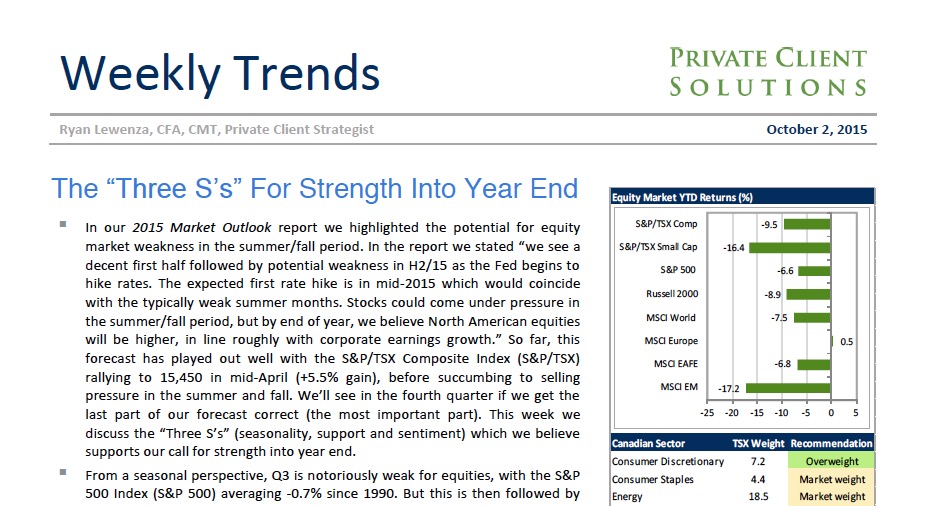Take a walk in their shoes: Refining your clients' experience
by Maria Considine King, Commonwealth Financial Network
Recently, a friend of mine decided to sit down and talk with his son about the dangers of smoking. He detailed the health risks and the social stigmas. He told his son that he didn't want him to ever start smoking. Feeling satisfied with himself, he asked his son if he had any thoughts. The teen just shook his head and said, "Dad, don't worry. I quit smoking ages ago."
This story is emblematic of what you may encounter when you start assessing and refining your clients' experience with your firm. Just as this father didn't know what his son thought about smoking (or that he had been smoking), you may not be aware of the opinions your clients have formed from their interactions with your firm. If you did take a walk in your clients' shoes, what would it reveal?
With this in mind, I'll offer you some tips on how to evaluate the client experience, as well as how to improve it.
Evaluate the Experience
To be fair, your daily tasks probably don't allow much time to put yourself in your clients' shoes. For example, have you ever toured your office with an eye toward how it appears to a person visiting your firm? Or test-driven your firm's processes (e.g., initial client visits, review meetings) to register how they influence perceptions and expectations? If you did, you might find areas for improvement that could positively affect your ability to retain clients and acquire new ones.
According to Michael Gerber (author of The E-Myth series), it is the process a business engages in, not its output, that defines the business. There are many processes that contribute to your clients' overall experience with your firm, including:
- The quality (appearance, tone) of marketing materials
- How easy it is to get to your building
- Signage helping visitors locate your office
- The sights, sounds, and smells of your office space
- How staff members greet visitors
- Staff professionalism (e.g., their appearance, speech, and sensitivity to confidentiality)
- The walk to the meeting room
- The appearance of the meeting room
- What you say and how you say it
- The quality of any reports or other materials clients receive
- How you treat visitors when they leave your office
- How quickly you follow up with clients regarding decisions/action steps
Solicit objective opinions. Of course, you could walk through each of these processes yourself. But you and your team are most likely too close to these activities to actually form truly objective opinions. On the other hand, someone less familiar with your firm can more accurately reflect on the fundamental elements of your clients' experience.
- Ask family members or friends who are not clients to become "clients for a day."
- Have them visit the office and note their reactions to the people and the surroundings.
- See how they rate your office on the items listed above.
Survey your clients. You might want to ask your clients directly about their experience. Consider using the following:
- Short questionnaire. Ask clients to complete a brief questionnaire when they come in for a review. Keep the questions short, and use a rating scale to make it easy for them to register their opinions.
- E-mail survey. E-mail survey tools (e.g., Constant Contact, SurveyMonkey) offer low-cost options for gathering client information. They can be fun to complete, and clients can take the survey at their leisure.
4 Rules to Improving the Client Experience
Once you compile all of this feedback, you're ready to start identifying areas for improvement. Each element in your process should satisfy the following four rules:
1) Provide consistent value. Examine each step in your client meeting process, for instance, and ask yourself how it benefits the clients you meet with or your business. If a step doesn't provide value, eliminate it.
For example, I talked with an advisor whose office printed several reports to give to clients during review meetings. After examining the process and getting client feedback, the advisor realized that clients weren't interested in the reports at all. He was generating them based on an assumption of value that didn't exist. Eliminating these reports:
- Streamlined the preparation process for the office's staff
- Changed the way the advisor discussed portfolio performance with clients
- Increased client satisfaction
2) Allow your firm to stand out as a place of impeccable order. Your team should be:
- Responsive
- Knowledgeable of the issue at hand
- Timely
- Professional
Impeccable order refers to how the office looks (e.g., clean, organized public areas, meeting rooms, and staff offices) and how the office feels.
- If staff members are calm, friendly, busy, and attentive, clients are more likely to perceive them as being in control of their work and, by extension, of the clients' financial needs.
- If the office and staff are disorganized and chaotic, clients may question how prepared the office is to handle their financial future.
3) Document processes in an operations manual. If you agree that your processes define your business, then those processes should be documented and continuously reviewed and updated. This allows you and your employees to take ownership of them, ensuring that your unique value proposition is expressed through every interaction clients have with you.
4) Provide uniformly predictable service to the client. Although clients may work with different members of your firm on various issues, the essence of their experience will be uniformly predictable if the preceding rules are in place. Predictability and consistency lead to reliability—which helps engender trust.
- If your clients know exactly what to expect from working with your office, they can explicitly state to friends and family what kind of service they can expect from you.
- If your interactions aren't predictable, this can lead to a gap between your clients' expectations and their reality—and make them reluctant to refer others to you.
Stay Engaged
After you've completed the process of evaluating and refining your clients' experience with your firm, continue to actively manage that process.
- Stay focused on the experience that you and your team strive to give to clients.
- Regularly ask yourself whether there's room for improvement.
- Involve staff in these evaluations.
- Encourage staff to think about how their efforts contribute to the perception of the firm in clients' minds. For example, if they're not engaging in consistently reliable processes, why not? If they are consistent, how can they be even better?
Pass It On
The client experience is a perfect example of how everything speaks to what you value, who you are, and how you are perceived. Advisors often tell me that word-of-mouth referrals are their most prized source of growth. Effectively managing the client experience can help ensure that what others say about your firm is something that you want them to pass on.

Commonwealth Financial Network is the nation’s largest privately held independent broker/dealer-RIA. This post originally appeared on Commonwealth Independent Advisor, the firm’s corporate blog.
Copyright © Commonwealth Financial Network















